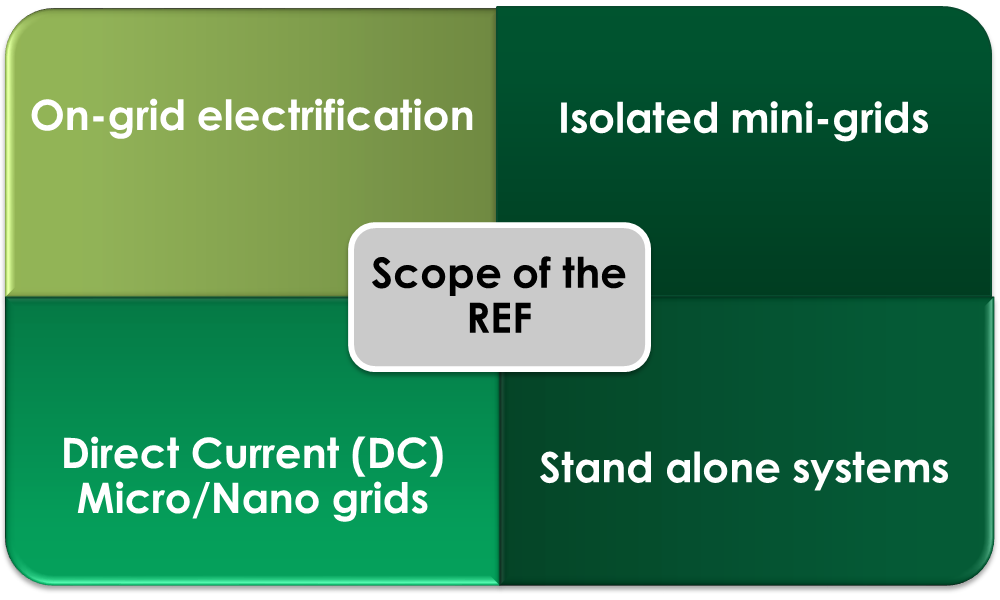- Mini-grids:
Isolated Mini-grids make most economic sense in rural growth poles (large densely populated villages with a medium load resulting from small productive activities) located far away from the central grid and/or where grid extension is costly.
Isolated Micro/Nano Grids shall be used where there is a remote and densely populated community with a demand for lighting and other small power appliances, but low load due to the absence of productive activities. Different Isolated Micro/Nano Grids may include one central generation set or interconnected Solar Home Systems (SHS) to power additional customers. Isolated Micro/Nano Grids may use low cost Direct Current (DC) grids and different voltage levels (12, 24 and 230 Volts), which are generally not compatible with the central grid.
Interconnected Mini-grids are any electricity supply system with a capacity of up to 1 MW with its own power generation system, but installed within an existing low-voltage distribution network, which forms part of the central grid. The system is by its technical principle comparable to an isolated mini-grid, but different in the sense that the distribution system was already in place before the new mini-grid is grafted on to it. This solution will generally be developed by Mini-grid developers in collaboration with the DisCos or IPDs that own the distribution grid to be used for the interconnected mini-grid.
Stand-alone Systems are individual electrical systems powering one building at a time and that are not fitted with a distribution system such as Solar Home Systems or Solar lanterns. The capacity of these systems can range from several Watts (domestic systems) to several kW. They can be installed on the roof of the building they are powering or be movable. Stand-alone Systems play a very important role in the electrification of the most remote, sparsely populated and poorest rural areas. Bigger and more sophisticated non-grid and captive power solutions may also be used to power rural industries or as back-up in grid-connected but poorly served rural areas.



